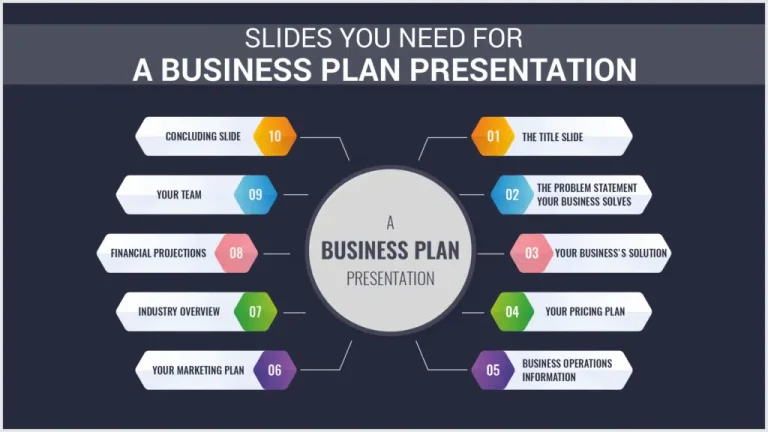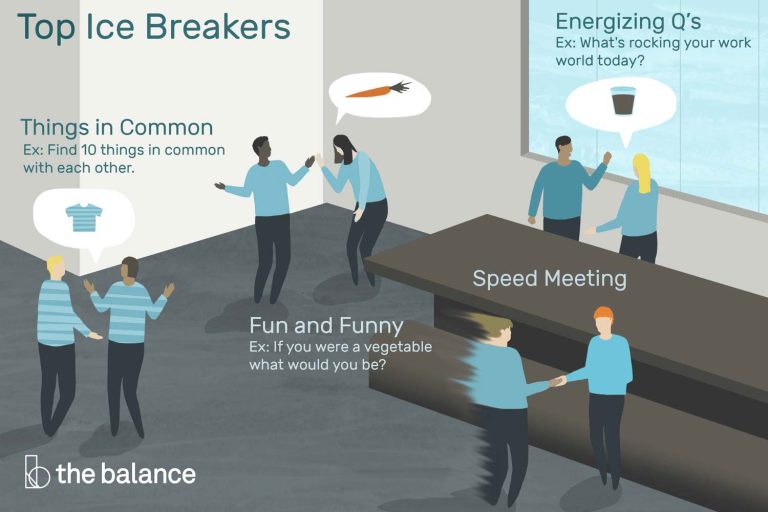How to Present Without Getting Nervous
To present without getting nervous, practice thoroughly and focus on deep, steady breathing. Visualize success to boost confidence.
Public speaking can be daunting for many individuals. Nervousness often stems from fear of judgment or making mistakes. Practicing your presentation multiple times helps you become familiar with the material. Engaging in deep breathing exercises calms your nerves and steadies your voice.
Visualizing a successful presentation can also enhance your confidence. Remember, the audience is there to gain valuable insights, not to criticize. Staying focused on your message rather than your fear allows you to connect better with your listeners. Preparation and mental strategies can transform your public speaking experience into a confident and engaging performance.
Preparation Techniques
Feeling nervous about presenting is common. Proper preparation can ease your nerves. Let’s explore some key techniques to help you prepare effectively.
Research Thoroughly
Understanding your topic is crucial. Start by gathering all necessary information. Use reliable sources and verify facts. Knowing your material well builds confidence.
Organize your findings into key points. Create an outline for your presentation. This makes your content structured and easy to follow.
| Step | Action |
|---|---|
| 1 | Gather information from reliable sources |
| 2 | Verify the facts |
| 3 | Organize findings into key points |
| 4 | Create an outline |
Practice Consistently
Consistent practice can significantly reduce nervousness. Rehearse your presentation multiple times. Practice in front of a mirror or record yourself.
- Record your practice sessions.
- Watch the recordings and note areas for improvement.
- Time your presentation to ensure it fits within the allotted time.
- Practice with friends or family for feedback.
Practicing helps you get familiar with your material. It also helps you identify and correct mistakes.
Understanding Your Audience
Understanding your audience is key to presenting confidently. Knowing who you are speaking to helps tailor your message. This ensures your content is relevant and engaging. Let’s explore how to understand your audience better.
Identify Needs
First, identify the needs of your audience. This helps you address their concerns.
- Research your audience’s background
- Ask questions to learn their interests
- Analyze feedback from past presentations
By identifying their needs, you can focus on what matters most to them.
Tailor Your Message
Next, tailor your message to fit your audience. This keeps them engaged and interested.
- Use simple language that everyone understands
- Include relevant examples and stories
- Adapt your tone to suit the audience
Tailoring your message makes your presentation more effective and relatable.
Effective Breathing Exercises
Feeling nervous before a presentation is common. Effective breathing exercises can help. These exercises calm your mind and improve focus. Here are some techniques to try:
Deep Breathing
Deep breathing is simple yet powerful. Follow these steps:
- Sit or stand comfortably with your back straight.
- Place one hand on your chest and the other on your belly.
- Inhale deeply through your nose, filling your lungs.
- Feel your belly rise more than your chest.
- Hold your breath for a count of three.
- Exhale slowly through your mouth.
Repeat this process five times. Deep breathing can lower your heart rate and reduce anxiety.
Controlled Exhalation
Controlled exhalation helps you stay calm. Follow these steps:
- Inhale deeply through your nose for a count of four.
- Hold your breath for a count of four.
- Exhale slowly through your mouth for a count of eight.
Repeat this cycle three to five times. This technique helps release tension and improves mental clarity.
| Exercise | Steps | Benefits |
|---|---|---|
| Deep Breathing | 5 steps | Reduces heart rate, lowers anxiety |
| Controlled Exhalation | 3 steps | Releases tension, improves clarity |
Try these breathing exercises before your next presentation. They can make a big difference. You’ll feel calmer and more focused.
Positive Visualization
Presenting without feeling nervous can be tough. But using Positive Visualization can help. This technique helps you see success in your mind. Let’s dive into how to use it effectively.
Imagine Success
Close your eyes and picture yourself presenting confidently. Imagine the audience smiling and nodding. Feel the excitement of sharing your ideas.
Visualize the room, the lights, and the faces. Create a mental image of everything going well. This helps your brain feel prepared and calm.
Create Mental Rehearsals
Practice your presentation in your mind. See yourself speaking clearly and smoothly. Imagine the words flowing easily.
Picture each part of your presentation. Think about the beginning, middle, and end. This mental practice makes you feel more ready.
Repeat this mental rehearsal often. The more you do it, the more natural it feels. This reduces nervousness and builds confidence.
Try these tips and watch your presentation skills improve!
Managing Physical Symptoms
Presenting can be a nerve-wracking experience. Managing physical symptoms is crucial. Control your body’s response to stress for a confident presentation.
Tension Release
Feeling tense before speaking is normal. Release tension for better composure.
- Deep Breathing: Inhale deeply through your nose, hold for a few seconds, and exhale slowly. Repeat this several times.
- Progressive Muscle Relaxation: Tense and then relax each muscle group. Start from your toes and work your way up.
- Stretching: Do simple stretches to loosen up your muscles. Stretch your arms, legs, and neck.
Steady Posture
A steady posture can make you feel more confident and less nervous.
| Aspect | Description |
|---|---|
| Stand Tall | Keep your back straight. Shoulders should be back and down. |
| Balanced Weight | Distribute your weight evenly on both feet. Avoid shifting side to side. |
| Grounding | Feel the ground under your feet. Imagine roots growing from your feet into the ground. |
Remember, controlling physical symptoms is key. It helps reduce nervousness and boosts confidence.
Engaging With The Audience
Presenting without getting nervous can be challenging. One powerful strategy is to engage with your audience. When you connect with them, you feel more relaxed. This section will guide you on how to engage effectively.
Eye Contact
Eye contact is crucial to connecting with your audience. It shows confidence and interest. Here are some tips:
- Look at different people, not just one.
- Hold your gaze for a few seconds, then move on.
- Smiling while making eye contact can make you more approachable.
Maintaining eye contact helps in building trust. Your audience will feel seen and valued. This reduces your nervousness too.
Interactive Questions
Asking interactive questions keeps your audience engaged. It makes your presentation lively. Here are some ways to do this:
- Start with a simple question to break the ice.
- Use questions that require a show of hands.
- Pose questions that make them think and respond.
Interactive questions create a two-way conversation. This makes the audience active participants. It also gives you a moment to breathe and relax.
| Eye Contact Tips | Interactive Questions Tips |
|---|---|
| Look at different people | Ask simple questions first |
| Hold gaze for a few seconds | Use show-of-hands questions |
| Smile while making eye contact | Pose thoughtful questions |
Engaging with your audience through eye contact and interactive questions can greatly reduce your nervousness. It makes your presentation more enjoyable and effective.
Using Visual Aids
Using Visual Aids can help make your presentation more engaging. They can also reduce your nervousness by giving you something to focus on. Visual aids can enhance your message and keep your audience interested.
Effective Slides
Slides can be a powerful visual aid. Keep them simple and clear. Use bullet points to highlight key points. Avoid cluttering your slides with too much text. Instead, use images and graphics to illustrate your points.
- Use large, readable fonts.
- Stick to a consistent color scheme.
- Include relevant images or icons.
- Limit each slide to one main idea.
Creating effective slides helps keep your audience focused. It also gives you a clear structure to follow.
Relevant Props
Props can make your presentation more interactive. They can also help you feel more confident. Choose props that are relevant to your topic. Make sure they are easy to use and visible to everyone.
| Prop Type | Example |
|---|---|
| Model | A small-scale model of a building |
| Product | A sample of a new gadget |
| Chart | A printed chart showing data trends |
Using relevant props can make your presentation more memorable. It also gives you something to hold and focus on, reducing your nervousness.
Post-presentation Tips
Feeling nervous during a presentation is common. But it’s crucial to handle your nerves effectively. Let’s explore some post-presentation tips to help you reflect and improve your performance.
Reflect On Performance
After your presentation, take time to reflect on your performance. Write down what went well and what could improve. This practice helps you grow and become better.
- Did you engage your audience?
- Were your points clear and concise?
- Did you manage your time effectively?
Answering these questions will help you understand your strengths and areas for growth.
Seek Constructive Feedback
Constructive feedback is essential for improvement. Ask a few trusted colleagues or friends for their honest opinions.
| Feedback Area | Questions to Ask |
|---|---|
| Content | Was the content relevant and engaging? |
| Delivery | Was my delivery clear and confident? |
| Visual Aids | Were the visuals helpful and easy to understand? |
Use their feedback to make specific improvements in your next presentation.
Remember, the goal is to learn and grow. Keep practicing and applying these tips to become a more confident presenter.
Frequently Asked Questions
How Can I Calm My Nerves Before Presenting?
Practice deep breathing exercises and visualize success. Preparation and rehearsal also help in building confidence.
What Techniques Help Reduce Presentation Anxiety?
Engage in positive self-talk, focus on your message, and connect with your audience. Practice regularly to gain confidence.
How Do I Stay Confident During A Presentation?
Maintain eye contact, speak slowly, and use gestures. Remember that the audience is supportive and interested in your message.
Conclusion
Mastering the art of presenting without nerves is achievable with practice and preparation. Implement the strategies discussed, and you’ll feel more confident. Remember to breathe, stay focused, and connect with your audience. With time and effort, your presentation skills will shine.
Keep pushing forward, and success will follow.





